For many years, the available choices for airborne connectivity systems were limited. Few products were made for smaller aircraft, and the costs of so-called “Wi-Fi” systems were prohibitive, affordable mostly for larger business jets, although the service costs were equally as expensive.
That is finally changing, with new competitors entering the airborne connectivity market, offering more coverage, new equipment options, technologically advanced antennas, and finally, lower service prices.
To get a handle on the connectivity market, it’s helpful to consider the available networks and then look at equipment and services. The network makes the connectivity possible, and each network has limitations that buyers should know about before making a purchase decision.
This article is limited to connectivity for non-airline business aviation and smaller aircraft including helicopters. Not all manufacturers provided pricing information.
Networks for Airborne Connectivity
There are two broad network categories that serve the aviation market, satellite communications (satcom) and air-to-ground (ATG).
Presently there are five satcom networks serving business aviation, although two are either just starting or about to begin. Within the satcom arena, there are differences between the altitudes where satellites orbit and also the kinds of service they can provide.
The two key orbital planes for aviation connectivity are geostationary (GEO) and low earth orbit (LEO). GEO satellites, which orbit at more than 22,000 miles above the earth, can deliver high-speed service globally, although existing networks don’t cover polar regions. That will change, however, with Inmarsat’s plan to fill those gaps. LEO satellites vary in data speed, and it takes many more satellites to deliver service from much lower altitudes, but LEO networks also provide full global coverage and lower latency (the time needed for signals to travel).
An advantage held by Iridium’s L-band frequency is that it is the sole LEO provider of safety service, which offers reliable communications with air traffic control (ATC) over oceans and remote areas where ground stations don’t exist. Inmarsat’s GEO SwiftBroadband L-band service is also safety service-qualified, but it doesn’t cover the poles. Ku- and Ka-band GEO satcom signals can’t penetrate moisture very well and that is why they don’t qualify for ATC safety service, but they can provide high-speed service.
Both Iridium and SwiftBroadband operate in L-band frequencies, which can penetrate moisture reliably and thus aren’t hobbled by rain and moisture-laden clouds. Iridium and SwiftBroadband don’t offer enough capacity to permit video streaming, so they are better suited to messaging, data upload (cockpit weather) and download (aircraft and engine telematics), and voice calls.
For data-hungry passengers who want to replicate their office and entertainment options while airborne, GEO networks have for many years been the only option. Speeds are high enough for video streaming, video meetings, heavy emailing with attachments, internet voice and video calls, and any kind of messaging. Of course, the cost of service goes up as the amount of data consumed grows, but that is the nature of airborne connectivity.
However, nascent LEO networks from SpaceX (Starlink) and OneWeb promise high speeds and sufficient capacity for video streaming, and those products are coming.
LEO providers often cite the lower latency of their satellites as a factor in providing speedy service, but that isn’t necessarily the case, according to James Person, Viasat director of business development and strategy. "Most people don’t realize that the number one cause of latency in any wireless or shared network is lack of capacity.” An example of this is when trying to send a video from a crowded event where users are overwhelming the cellphone network. “They don’t have enough capacity,” he explained, adding that video conferencing and voice calling already work well on GEO networks. However, some latency-sensitive applications like rapid securities trading or first-person shooter games lose out to ground-based fiber networks, and that is the same with LEO networks.
“We deal with latency by having massive amounts of capacity,” he said. “A well-engineered GEO network can do anything LEO can do from a latency standpoint, and the key is capacity.”
GEO Satcom Networks
The main aviation GEO satcom constellations are operated by Inmarsat (Ku-, Ka-, L-band), Viasat (Ku-, Ka-band), and IntelSat (Ku-band).
Inmarsat
Inmarsat has been serving the aviation satcom market for more than three decades, and it continues to add capacity to its GEO network. This year, Inmarsat will launch a second satellite in its I-6 constellation, the I-6 F2, which will enter service in late 2023 to expand its Global Xpress (GX) Aviation service.
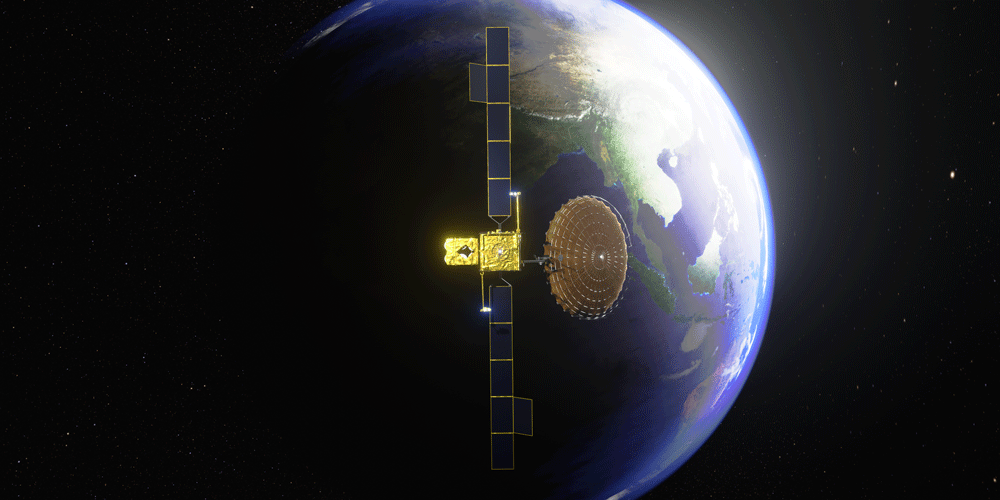
Next up will be two satellites—GX10a and 10b—that will live in a highly elliptical orbit (HEO) to provide coverage for polar regions. Launch is expected by 2025. “These HEO satellites will bring our…customers seamless coverage over the arctic, at 65 degrees North and above,” according to Inmarsat Aviation senior v-p inflight connectivity William Huot-Marchand.
Another set of new satellites will follow, GX7, GX8, and GX9. “These satellites will take advantage of innovative dynamic beamforming, allowing the power and capacity needed to be concentrated down the beams as required by the network,” he noted. “In addition, GX7, GX8, and GX9 will be software programmable, meaning we’ll be able to reprogram and change their capabilities after launch in line with our customers’ priorities.”
Announced last year, Inmarsat is bolstering its L-band SwiftBroadband (SBB) network with the new L-band Elera system and SwiftJet service. SBB offers system speeds of up to 432 kbps, while SwiftJet-equipped aircraft will be able to tap into speeds of up to 2.6 Mbps, allowing full email, web browsing, and some video streaming services. Like SwiftBroadband, Elera will also be safety services-certified. SwiftJet service providers are Honeywell and Satcom Direct. SBB customers will be able to upgrade to SwiftJet with “minimal changes to the installed equipment,” according to Inmarsat.
Launch of Elera service is scheduled for this year, and the network will be further enhanced with the addition of the I-6 satellites. These will support SwiftJet users through the 2030s, as well as be part of Inmarsat’s Orchestra dynamic mesh network. Orchestra taps into GEO and LEO satellites and terrestrial 5G cellular to provide communications services for air, ground, and maritime customers.
“In business aviation, while passenger behavior has evolved since the global pandemic, one factor that remains unchanged is the expectation for a superior experience at every stage of the journey,” said Kai Tang, Inmarsat Aviation head of business aviation. “It must be perfectly predictable, without any negative surprises. Inflight connectivity is no exception. In fact, our latest survey of business aviation professionals highlighted that expectations around consistent, reliable connectivity have only amplified in recent times, and that will continue in the future too.” 
Inmarsat is enhancing service plans with increased upload speeds while keeping costs the same, according to Tang, part of the company’s JX Evolution program, which “leverages our existing global Ka-band satellite network and the highly successful JetWave terminal by Honeywell. Inmarsat also is introducing this year JX Edge “high-end service plans.”
Upcoming Inmarsat developments include faster speeds and more creative service plans for its JetConneX satcom, which is installed in 1,200 aircraft. “We’re testing at 130 to 140 Mbps,” Tang said.
Viasat
Viasat is unique in the satcom business as it owns and operates the Viasat satellite constellation and ground network and manufactures the airborne terminals. Customers can buy service directly from Viasat or from three service providers: Collins Aerospace, Honeywell, or Satcom Direct.
While Viasat’s Ku- and Ka-band GEO network doesn’t cover polar regions, the previously announced (November 2021) Viasat acquisition of Inmarsat will eventually fill those regions. The deal is expected to be completed this year. Also this year, Viasat plans to launch its first and second VS-3 satellites, which will fill in its global Ka-band network, followed later by the third VS-3.
The new satellites each weigh about six tonnes and have solar panel spans similar to the wingspan of a Boeing 767. Although they aren’t much larger than VS-2 and VS-1 satellites, the VS-3 has four times the capacity of the VS-2 birds. One VS-3 alone has more capacity than the existing Viasat network.
Another benefit of the VS-3 satellites is that the capacity can be dynamically shifted to where it’s needed. If the East Coast of the U.S. has high demand in the morning, the satellites can be focused there, then moved to the West Coast as the sun rises and travelers start moving.
Viasat is a good example of improvements driving lower costs. When it first launched service six years ago, Ku-band satellites delivered 1.5 Mbps to the aircraft, and Viasat charged $9,000 per month for 5 GB of data. Now on its Ka-band network, Viasat offers regional data plans ranging from $2,795 per month for 15 GB to $9,999 per month for unlimited data. For global service, plans range from 50 GB for $6,995 to unlimited for $13,995. with speeds of up to around 100 Mbps. “It’s 50 times faster at about the same price,” said Viasat’s Person. Once VS-3 is up and running, the top Ka-band speed will be faster than the current 100 Mbps, and upload speeds from aircraft to satellite will grow from the current 2 Mbps to about 20 Mbps.
So far, 22 aircraft platforms are certified for installation of Viasat equipment, which like all of the high-speed GEO satcoms, requires a tail-mounted mechanically steered antenna. That limits installations to super-midsize and larger jets. With more than 1,300 shipsets installed in commercial, military, and business aircraft, Viasat is a factory option on Bombardier, Embraer, and Gulfstream jets.
The airborne Viasat equipment consists of three LRUs that weigh a total of 55 pounds. All of the equipment can be installed outside the aircraft’s pressure vessel, making installations easier.
A Viasat engineering team in Lausanne, Switzerland, is developing an electronically steered antenna (ESA) that will open Viasat service to smaller aircraft. “We’re probably three to four years away from getting an antenna that meets our performance requirements,” said Person.
Meanwhile, the VS-4 satellite is under development and will add further capacity to the Viasat network.
IntelSat
IntelSat fields a Ku-band GEO constellation of 52 satellites that it owns, and its FlexExec service for business aviation is dedicated to that market segment so its capacity isn’t shared with airline or military users.
Satcom Direct is the business aviation airborne hardware and service provider for FlexExec Ku-band satcom, using its tail-mounted PlaneSimple antenna.
All IntelSat business aviation customers get the same maximum system capacity, and service plans are charged by the hour, not by the megabyte. “It was a challenge for customers when we try to explain what a megabyte will do for them,” said Michael Skou Christensen, senior v-p, Satcom Direct International. “What does one megabyte translate into user experience?”
The existing IntelSat service runs at 15 Mbps down from the satellite, and 2 Mbps up to the satellite. In mid-2023, he said, that is expected to grow to 20 Mbps down and by the end of the year 35 to 40 Mbps.
GEO Equipment Manufacturers
Viasat, as mentioned, makes its own airborne hardware, and this is similar to the approach that SpaceX’s Starlink has taken. Other satcom constellations provide the network and allow value-added resellers (VARs) and/or value-added manufacturers (VAMs) to offer the service and hardware to end users. A number of companies make Iridium products, ranging from fully capable high-speed Certus hardware to products that enable basic messaging at low cost.
For Inmarsat’s network, there are three main airborne hardware manufacturers, Honeywell, Satcom Direct, and Orbit. Collins Aerospace is a service provider for Inmarsat’s JetConneX satcom, but it doesn’t manufacture airborne hardware.
Honeywell
Honeywell manufactures JetWave airborne hardware and is a service provider for Inmarsat’s JetConneX Ka-band satcom as well as for other networks.
STCs are available for installation of JetWave on most large business jets, including Airbus and Boeing VIP jets; Bombardier Challenger 600s through 650s and Globals; Dassault’s Falcon 900, 2000, 7X, and 8X; and Gulfstream’s large-cabin jets.
For VIP Airbuses and Boeings, a fuselage-mounted antenna (83 pounds) is available. Business jets can be fitted with Honeywell’s lighter tail-mounted antenna (10 pounds). Additional airborne equipment includes a radio frequency unit (11.3 pounds), Ka-band networking unit (8.7 pounds), and modem manager unit (14 pounds).
Honeywell JX service plans range from JX-1 with 30 GB monthly at download speeds from 1.5 to 4.6 Mbps and uploads from 0.4 to 0.7 Mbps; and up to the JX-5 Pro unlimited plan at 6 to 20 Mbps download and 0.8 to 1.0 Mbps upload.
Honeywell’s BendixKing division makes the AeroWave L-band satcom, with an antenna that fits on small aircraft. Data rates are 100 kbps for $39.99 per hour or 200 kbps for a per-megabyte rate. Equipment cost is about $35,000 installed, giving aircraft owners and operators an option for a lower-priced, albeit slower data rate, satcom.
Satcom Direct
Satcom Direct began as a service provider and has grown into a satcom hardware company, starting with the Plane Simple Ku-band hardware that runs on the Intelsat FlexExec network and now offering the Plane Simple Ka-band for Inmarsat’s Global Xpress network. The company also makes its own router for Wi-Fi distribution in the cabin and flight deck.
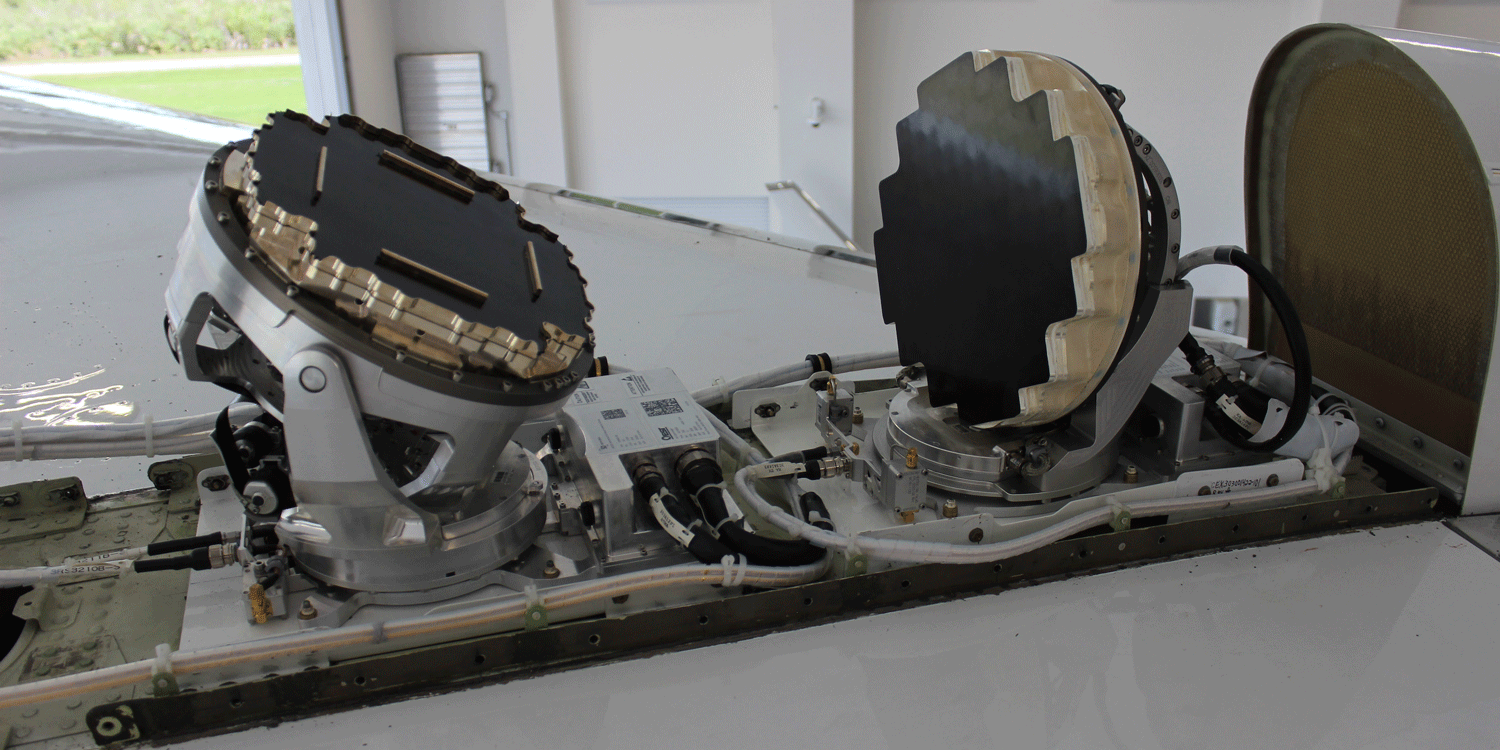
While the Plane Simple Ku- and Ka-band antennas fit on midsize jets and larger, Satcom Direct is developing an ESA that will work with the OneWeb constellation and be available for smaller aircraft.
Plane Simple Ku is now STC’d on the Boeing BBJ; Bombardier Challenger 604 through 650 and Globals (later models pending); Falcon 900, 2000, 7X, and 8X; Gulfstream IV through G550 (later models pending); and Embraer Praetor 500 and 600. Ka-band STCs are underway for these airplanes. Price for Plane Simple Ku is $180,000, plus $60,000 for the satcom modem. Satcom Direct had delivered 50 chipsets of Plane Simple Ku by the end of January. Pricing for the Ka-band and OneWeb systems is pending.
Ka-band Plane Simple is STC’d in Satcom Direct’s Gulfstream G550 and will be available for purchase later this year.
Eventually, Satcom Direct will offer dual-dissimilar installations, for example, one Inmarsat or Intelsat and a OneWeb or one Inmarsat and one Intelsat terminal to provide separate satcom access to flight crew and passengers. “Many customers are interested in both,” said Satcom Direct v-p Christensen. “Multiple terminals enable us to provide real dual-dissimilar installations to have high-speed redundancy.”
Customers with a Ku-band Intelsat Plane Simple system can easily upgrade to an Inmarsat satcom by using the same wiring. The antennas and terminals are the same size and use the same brackets.
For OneWeb, Satcom Direct is working with antenna manufacturer QEST on an ESA (flat-panel) antenna, which will be installable on smaller aircraft. Demonstration transmissions have been tested with the new antenna, and Satcom Direct expects over-the-air tests in mid-2023 and availability about a year after Plane Simple Ka hits the market.
While the ESA antenna opens the market for smaller aircraft to Satcom Direct, Christensen sees this as supplementing the current satcom market.
“We see combinations between different technology and satellite constellations,” he said. “ESA will enable us to get into smaller airframes, and also provide a great alternative with a global footprint. This will open up markets that till today haven’t been served.”
Further, the discussion about which network is best, GEO, LEO, or even mid-earth orbit, “is irrelevant,” he said. “LEOs are not going to make GEOs extinct and vice versa. We need to talk about what the user experience is. In the end, the customer sitting in the back, they don’t care [which network is used].
“There are many entries to this realm,” he concluded. “If you look at all the efforts going on in the space segment, both with legacy and new entries—OneWeb, Starlink, Kuiper—it’s exciting [to see] that higher level of interest providing more options for customers. We take every entry seriously and see [each one’s] benefits and drawbacks.”
Cobham
Cobham has been manufacturing Inmarsat SBB hardware and providing SBB service for more than 20 years and now has more than 4,000 aviation systems in the field. STCs are available for Cobham SBB installations on a variety of business aircraft from Bombardier, Cessna, Dassault, Embraer, and Gulfstream.
The Aviator S series by Cobham is available in four different sizes, depending on the system speed and thus size of the antenna. All of the Cobham Aviator S SBB satcoms are safety-service qualified and also support voice communications.
Aviator 200S fits on almost any size aircraft and weighs about 22 pounds. It is capable of 200 kbps service. Aviator 300S boasts speed of 332 kbps with a system that weighs about 22 pounds. Moving into the high-gain-antenna arena, Aviator 350S offers 432-kbps service, also at 22 pounds. And Aviator 700S can handle four 432-kbps channels with a system that weighs 46 pounds.
Up next for Cobham is development of a new airborne terminal for Inmarsat’s SwiftJet service, and this is coming in about two years.
Orbit
Orbit offers an alternative to the traditional satcom airborne terminal providers, with its GX30 Inmarsat Ka-band system. Last August, Orbit announced that the GX30 was approved for use on Inmarsat’s Global Xpress network.
The AirTRx 30Ka for business aviation is a two-LRU system with a 12-inch antenna that can be fitted to super-midsize and larger jets. System weight on the tail is 22 pounds and speed is up to 130 Mbps, depending on the terminal and network.
Orbit’s GX30 is designed to work on a variety of satcom networks, including LEO through GEO constellations.
LEO Satcom Networks
Iridium Communications
Iridium was first out of the gate with its L-band LEO satellite constellation, which has been in operation for more than two decades. The first satellites have been replaced by the Next series, which deliver more speed and capacity for Iridium’s Certus products. Top speeds are 700 kbps, which is sufficient for data offloading (telematics), flight tracking, messaging, and voice calls but not heavy-duty applications such as video streaming.
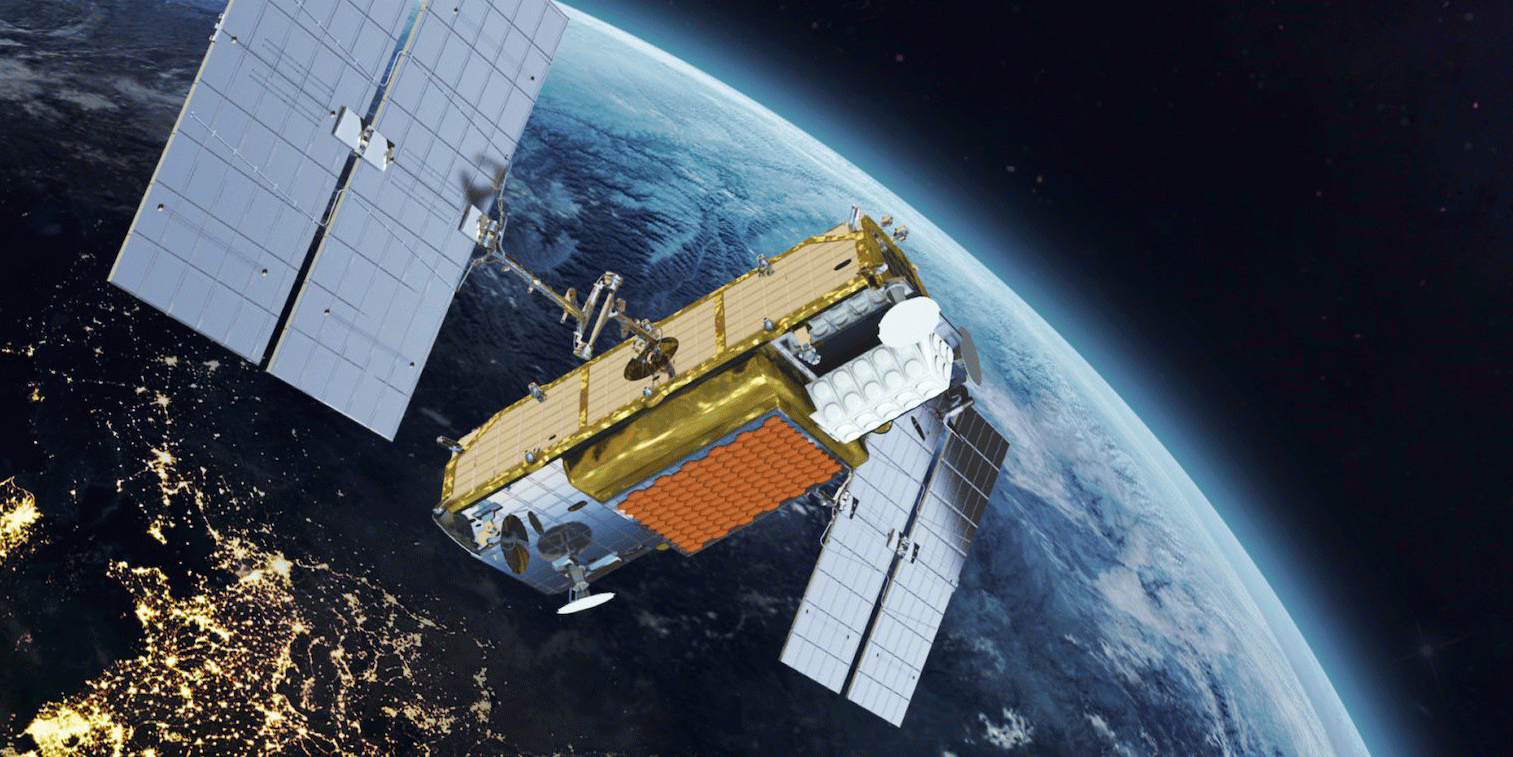
Iridium Next satellites also carry ADS-B receivers for Aireon, which uses them to provide surveillance of aircraft over oceans and sparsely populated areas where there is no radar or ADS-B ground stations.
The 66 Iridium satellites (and 10 spares) communicate with each other on Ka-band frequencies. This helps Iridium keeps costs down because it doesn’t have to build ground stations all over the world to move data around, according to executive director of aviation John Peterson. “I can have an aircraft halfway over the Pacific, and it talks to a satellite, then that message gets bounced to a satellite [elsewhere] then drops the data to a teleport.” With so many satellites operating in six orbital planes, Iridium coverage is worldwide.
Not only do Iridium’s L-band signals to and from ground and airborne terminals penetrate moisture, but the ability to communicate between satellites means that even if signals were blocked from satellite to aircraft, they can still be rerouted to another satellite that is able to reach the teleport or terminal.
L-band can’t handle high data rates, Peterson explained. “We prefer to stay in the safety [service] side and can provide that level of service to the cockpit. Ka- and Ku-band [systems] can handle the cabin side."
Certus operates at four speeds: 22, 88, 350, and 700 kbps. The higher the speed, the higher the cost of the service and the Iridium modules that are the heart of airborne and other terminals. Iridium manufactures the modules and sells them to VARs/VAMs that can build their own terminals (sometimes called modems) or buy complete terminals from Iridium.
The first Certus products released about two years ago were the 22 and 88 kbps modules, but now the 350 and 700 modules are available and resellers are incorporating them into new products, for example, Collins Aerospace, Honeywell, and Skytrac.
For service provision, Iridium customers work with VARs such as the above manufacturers and companies like Satcom Direct. Safety service requires at least the 350 kbps system.
Two antennas are available for Iridium Certus, a low-gain antenna that is a 3.5-inch-diameter disk and an active high-gain antenna measuring 15 inches long, 8 inches wide, and 2.5 inches tall. The high-gain antenna can still fit on a wide variety of aircraft.
Certus service is billed at dollar-per-megabyte rates, “more like a cellphone plan,” according to Peterson. To help customers keep costs down, Iridium Messaging Transport (IMT) was released in the past year. This provides bi-directional messaging but where data is collected and then sent all at once and stored in the Amazon Web Services cloud until it is needed. “Now an app provider can suck it in, process it, and produce a result,” he said. A use case for IMT could include apps like Daher’s MyTBM, which uses engine and airframe data to analyze and track performance. “The biggest issue in analytics is that the cost to get data has got to be less than the value the data brings,” he explained. Other L-band satellite systems are more expensive and VHF datalinks aren’t always available. “We’re bringing a solution to aviation that it’s been looking for a long time, a reliable pipe to get data off or on the aircraft.” IMT is available with any level of Iridium Certus service.
OneWeb
With two more launches scheduled in the second quarter, OneWeb’s LEO constellation will reach its full strength of 588 satellites. A January launch brought the total to 542. OneWeb’s global LEO aviation service will be available initially through Gogo Business Aviation, either as a standalone satcom or paired with other systems such as Gogo’s Avance L3 or L5 ATG solution or other LEO or GEO satcoms. Satcom Direct is also developing OneWeb airborne hardware and will serve that market.
OneWeb is also not an L-band system and operates on Ku-band from the satellite to the terminal and Ka-band for communications to the satellites. OneWeb has the capacity and speed to allow video streaming, according to Jason Sperry, head of business aviation.
OneWeb is targeting small to large aircraft, any that can accommodate Gogo’s ESA, which was developed by Hughes. Hughes also developed the ground gateways and airborne terminals for OneWeb and Gogo.
The product launch timeline for OneWeb’s aviation service is likely around early 2025. With the Gogo ESA, Gogo’s modeling shows that users will see peak speeds of up to 57 Mbps to the aircraft and 3 Mbps from the aircraft to the satellite.
SpaceX Starlink
Part 135 airline JSX is the first operator to implement Starlink, which has been installed on its Embraer ERJ-145s. The STC was done by Aerospace Design & Compliance, a Wilmington, Delaware engineering company.
According to information released by SpaceX last year, STCs are underway for Bombardier Globals and Challenger 300/350s; Embraer ERJ-135s and Legacy 600/650s; Dassault Falcon 2000s; and Gulfstream G450s, G550s, and G650s.
A Starlink installation includes an aero terminal box, power supply, two wireless access points, harnesses, and an ESA that mounts on the top of the fuselage. The antenna will require a fairly large airframe to accommodate installation, so thus far, it appears that Starlink won’t be an option for smaller aircraft.
Aircraft hardware will cost $150,000 and service plans range from $12,500 to $25,000 per month. A reservation for a future delivery slot requires a $5,000 payment.
SpaceX claims network speeds up to 350 Mbps to each airborne terminal. There will be no long-term service contracts, according to SpaceX, and “all plans include unlimited data.”
AIN has repeatedly tried to contact SpaceX for further information and has received no response.
LEO Equipment-Iridium
As the only LEO network operating until Starlink, OneWeb, and others come along, Iridium had a big head-start on LEO satcom. A variety of companies have developed Iridium communications devices, from low-cost personal tracking and SOS messaging units from Garmin, Skytrac, and others to portable and installable messaging-only products for aircraft from Airtext and Bizjet Mobile. Iridium recently unveiled its Go! exec portable satellite communicator with Certus 100 capability (88 kbps download, 22 kbps upload).
Garmin
In addition to the inReach personal Iridium devices, Garmin manufactures the GSR 56 Iridium voice and messaging system for permanent installation in aircraft. At $10,495, the GSR 56 offers voice calling and messaging either through the aircraft’s installed Garmin avionics or using the Garmin Pilot app (Android or iOS versions). The app functionality requires that the aircraft also be equipped with Garmin’s Flightstream 510 wireless gateway.
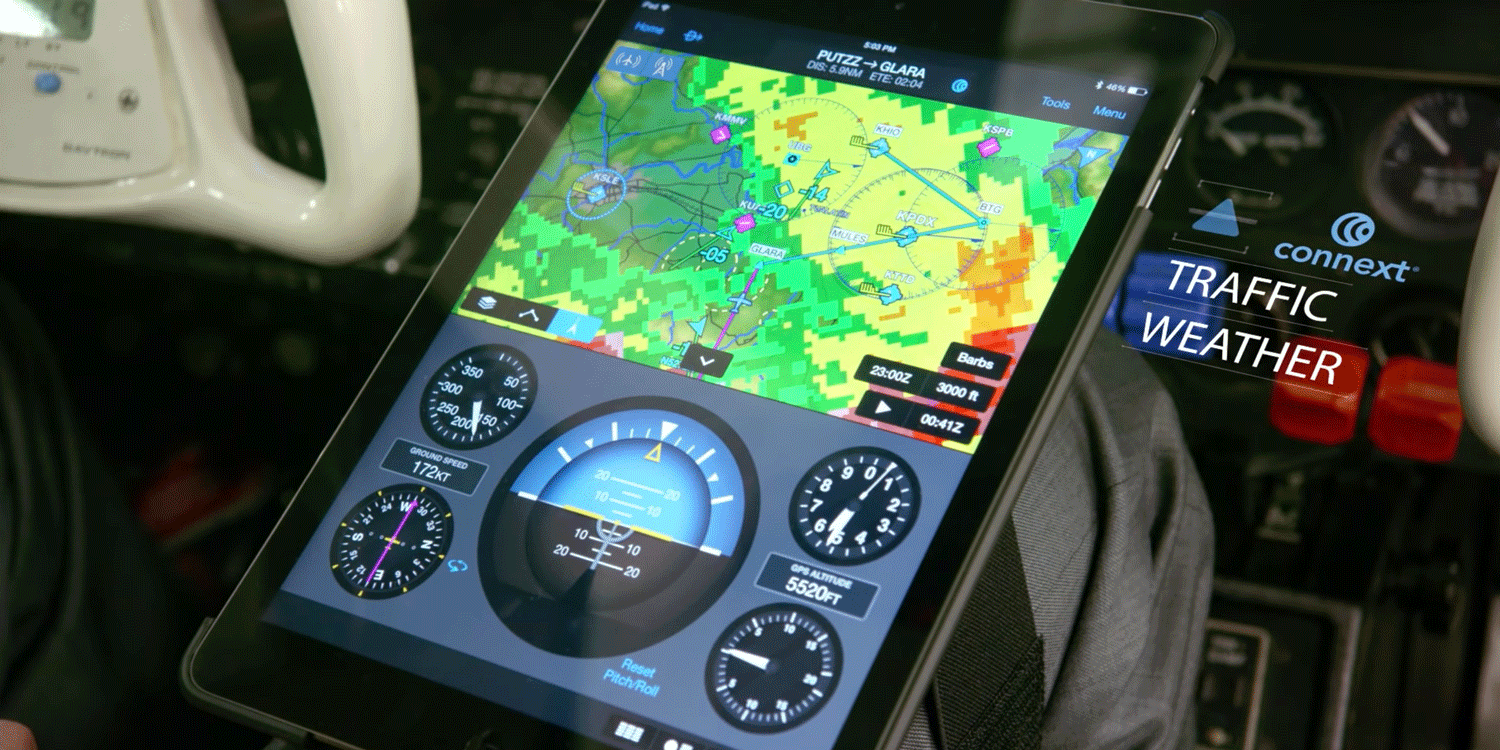
Other services available via the GSR 56 include worldwide weather with high-resolution weather radar in some regions. Operators can also track the GPS position of GSR 56-equipped aircraft anywhere in the world.
While it is likely that Garmin is working on a Certus version of the GSR 56, the company doesn’t discuss future products and waits until they are certified and/or ready for delivery before unveiling them.
Skytrac
Skytrac continues to support customers with legacy equipment—more than 8,000 in 100-plus countries—while it is focusing on bringing Iridium Certus equipment to market. So far, the company has introduced a mid-band and broadband Certus system.
“Currently Iridium is and has been a proven network that is truly global, interlinked, and provides us with the [system] size, weight, and power that is not paralleled by other providers,” said Jan Van der Heul, Skytrac v-p of sales.
For its mid-band products, helicopters are an important segment. “Starlink antennas are too big to put on helicopters,” he explained. "For that market, Iridium Certus is the sweet spot. Our antennas fit on tailcones, canopies, and fin tips. We’ll find a spot for it.”
For larger aircraft and “operations that require broadband in remote locations, we have the size, weight, and power requirements to fit on those aircraft.”
Mission-critical operators rely on Skytrac, he explained, not just for communications but also flight following and position reporting. “In search and rescue and ISR, you have communications that are not interrupted and risking the operation.”
Skytrac’s mid-band Certus system is available with 88 kbps to the aircraft and 22 kbps to the satellite, while the broadband system offers broadband 704 kbps to the aircraft.
While Skytrac is offering upgrade incentives, it is also seeing new customers for its Certus products, especially those who want the highest speed for offloading video content, according to Van der Heul.
Buyers of the broadband Certus equipment get another advantage besides speed, and that is the ability to provide dedicated and separate service to the cabin and cockpit. The flight crew could use the system for safety services, for example, while passengers use their capacity for messaging, voice calls, and more data-intensive functions.
STCs are available for Skytrac installations in a variety of helicopter and fixed-wing types. Flight-tracking customers can also take advantage of Iridium’s Aireon space-based ADS-B service and integrate that into the data stream in Skytrac mapping products.
Honeywell
Honeywell is a value-added manufacturer of the Aspire 150 and 350 Iridium terminals. Lighter than previous-generation Iridium equipment, Aspire’s high-gain antennas can be installed on a variety of aircraft. Aspire 150 provides operators with fast and reliable connectivity at lower costs, according to Honeywell, while the 350 provides these same features but adds FANS datalink capability. Both provide segregated Iridium cockpit safety services and Certus high-speed voice and data connectivity at speeds up to 700 kbps.

Collins Aerospace
Collins Aerospace was an early developer of Iridium systems, with more than 3,000 fielded. Its new Certus satcom—the IRT NX—offers all the Certus features such as safety services, segregated cockpit and cabin communications, FANS datalink, voice calling, worldwide weather, low- or standard-resolution video, and more, all at speeds up to 700 kbps.
LEO Equipment-OneWeb
Gogo
For aircraft already equipped with a Gogo Avance ATG system, adding OneWeb involves mounting the antenna and connecting it to the Avance system and to power, then upgrading the Avance software.
Gogo’s Hughes ESA measures 24 by 11 by 2 inches and mounts on top of the fuselage.
Gogo’s airborne equipment should complete DO 160 environmental testing and be ready for submittal to the FAA for supplemental type certificate (STC) development and parts manufacturer approval in late 2024, according to Jim MacDougall, v-p of product management. “We expect that we’ll have a prototype flying earlier than that. We plan to have a lot of STCs at market launch,” although Gogo hasn’t identified which aircraft will be first.
Gogo hasn’t revealed costs of the OneWeb equipment or service yet. “That will be coming in the next couple of months,” MacDougall said. “We want to be extremely competitive and disruptive on hardware pricing.”
As for service pricing, MacDougall explained that various plans are envisioned, from a single price for a certain number of gigabytes of data per month covering both ATG and satcom or a low-cost introductory plan, perhaps hourly, for aircraft that don’t fly as much. “We’re trying to provide a lot of flexibility to meet customers’ needs and not tell them this is what you get,” he said.
Satcom Direct
Satcom Direct is joining the LEO market with a OneWeb terminal and antenna and expects to have systems available not long after OneWeb’s constellation is complete later this year.
Starlink
SpaceX is the manufacturer of Starlink equipment. For more details, see previous discussion of the Starlink network.
Air-To-Ground
Gogo Business Aviation
Gogo Business Aviation pioneered ATG connectivity in the U.S. starting in 1997 and now has more than 6,600 aircraft equipped, 2,900 of those with its Avance L3 and L5 systems. Avance, introduced in 2017, delivers faster speeds, around the same as ground-based 4G LTE cellphone networks and allowing users to stream video and send and receive large attachments.
Demand for connectivity is at an all-time high, according to Gogo president Sergio Aguirre. Users are doing data-heavy activities such as using Zoom, FaceTime, and Microsoft Office 365. In the fourth quarter of 2022, Gogo saw a 38 percent increase across all systems in megabytes consumed per flight. The company also saw a 29 percent increase in daily flights compared with the same period in 2019.
Aircraft equipped with Avance L5 will be able to upgrade fairly easily to Gogo’s new 5G ATG service, which will deliver about 25 Mbps on average with peak speeds between 75 and 80 Mbps. Gogo said it remains on track to launch its 5G service in the second half of this year, now that it has successfully completed critical design review of the 5G chip needed for the new system. The ground network was completed for the U.S. late last year and expansion to Canada is ongoing this year.
Gogo has been working with manufacturers and authorized dealers on STCs that will cover more than 30 aircraft models. Customers can install Gogo’s Avance L5 platform now with 5G provisions and operate on the company’s 4G network until the X3 LRU is available.
Gogo’s service currently covers the continental U.S., part of Alaska, a good amount of Canada, and a portion of northern Mexico and the Gulf of Mexico.
Avance L5 retails for $141,132. With 5G, the Avance L5 systems costs $221,736. An upgrade from a current L5 to add 5G will cost $110,244. All of these prices don’t include installation. Airtime prices for Avance L5 range from $4,345 unlimited to $9,995 (unlimited plus streaming) per month. The 5G data plan prices will be $5,000 (10 GB) to “$6,200 (20 GB) per month.
SmartSky
“We’re off to the races,” said SmartSky CEO David Helfgott. "[SmartSky] is available today, we’re selling it and flying aircraft on our network.”
So far, the new competitor in the U.S. ATG market has fielded 12 STCs covering Cessna Citation XLs and Xs, Gulfstream IVs through G550s, Bombardier Challenger 601s through 650s, Embraer EMB-135s and -145s, Dassault’s Falcon 900 series, and King Airs. And more are coming, according to SmartSky president Ryan Stone.
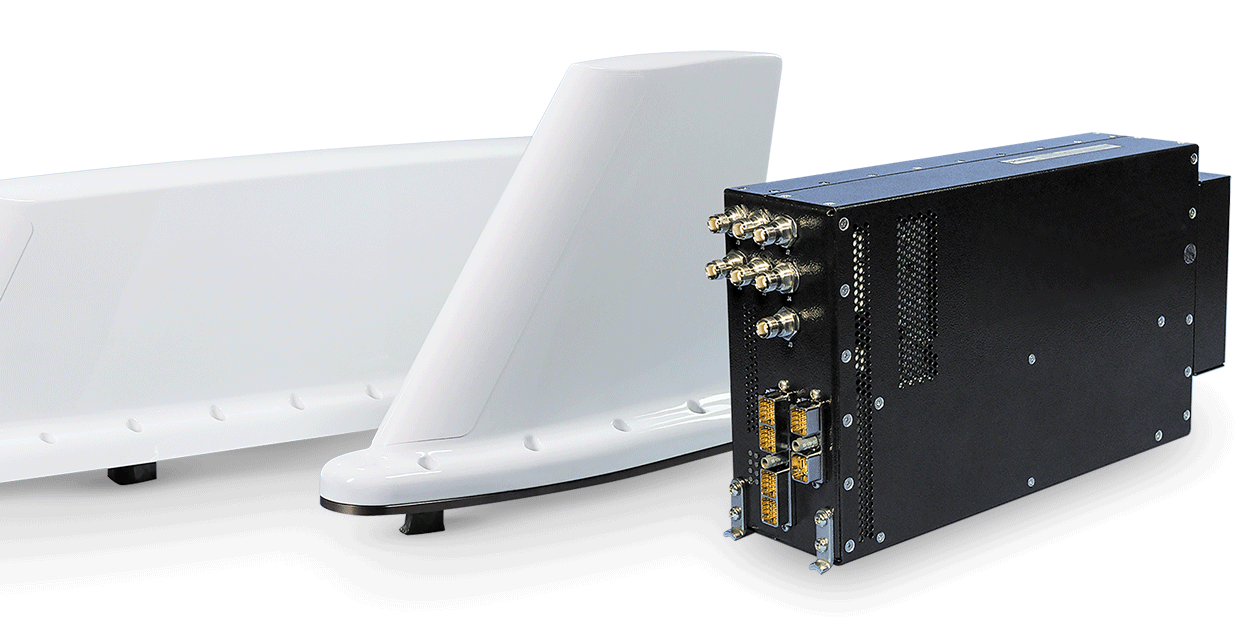
SmartSky is working with dealers and aircraft OEMs on new STCs. “With Textron Aviation, we’re pushing very hard,” Stone said, “and there are a lot of models we’re doing.”
“There is very strong interest in the small jet and turboprop market,” Helfgott added.
Customers are using SmartSky for video streaming and other data-intensive applications, according to Stone, including more uploading from the aircraft, which traditionally hasn’t been very fast. “We have more bi-directional connectivity,” Stone said. “One customer said the SwiftBroadband bill went down dramatically,” he added, explaining that this was when that customer was flying inside SmartSky’s coverage area over the U.S. While the network provides service in the areas where most business aircraft fly in the U.S., SmartSky is still deploying some antennas in the north-central and western U.S.
“We are engineering for peak capacity,” said Stone. “There are 1,000 to 1,100 business aircraft in the air [at any given time], and we have 30,000 beams that are high capacity and independent. We’ve engineered the geometry of the network around heavy flight routes. With that many beams and the nature of business travel, we’re well prepared for growth.”
The airborne SmartSky equipment is priced at $119,999, and installation takes seven to 10 days, depending on the aircraft and what other work is being done at the same time. The equipment includes the aircraft base radio and two antennas that mount on the aircraft’s belly.
Airtime rates range from $3,495 per month for 5 GB of data to an unlimited plan for $9,995 per month. For all plans except unlimited, overage fees are $1,495 per GB.
SmartSky also offers digital products to enhance its services, such as Skytelligence aircraft and flight data and SmoothSky real-time turbulence reporting.
Next up for SmartSky is a version of its system designed to fit smaller aircraft, with just a single antenna.







